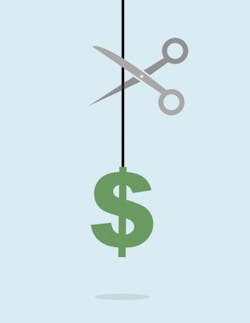At a staff meeting, a new plant manager told the plant engineer of a multishift factory to lay off two people from maintenance. “Which two?,” he asked. The plant manager replied that the company wanted to reduce total headcount, so the decision was up to the plant engineer as long as he reduced the headcount by two.
Seeing the stupidity of this edict, and suspecting the company had mandated no such thing, the plant engineer replied that he wanted to lay off the two most highly paid people. “That will be fine,” the plant manager replied. “Great. Glad to help out. Now, you need to know they are the two most highly skilled people. When they are gone, we’ll save on payroll costs, but we’ll also have to shut down the ABC line.”
In this example, we are substituting “ABC” for the actual name of the line to avoid identifying the company involved. This line was the plant’s most profitable line, and it also generated the most revenue. When the plant engineer put it this way, the plant manager said to lay off two other people instead.
“So let me get this straight,” the plant engineer replied. “Someone has caught on to the idea that you can run a race faster if you weigh less. Makes sense to me. But cutting off your leg to reduce your weight doesn’t seem like a good way to reduce weight. And if you’re already at the optimum weight, there is no place further to cut. Any cut at this point, which is where we are now, means a reduction in profits. Which profits do you want to eliminate by saving money on payroll?”
Cost-cutting just to meet arbitrary numbers is never a good idea. Newly promoted managers or newly hired plant managers often will try to boost profits by assuming their predecessor has not already leaned out the organization. Their predecessor might not have, but simply assuming that can lead to reduced profits or even put the plant (or company) into a death spiral.
Common targets for mindless cost-cutting include:
• Personnel. Often targeted are the older workers, whose accumulated knowledge is lost forever. Why? Because someone looking at a spreadsheet looks at their higher pay, but doesn’t value their experience. Yes, sometimes personnel cuts are necessary. But make the decision only after careful consideration of the real value of the employees who may be affected.
• Training. Training of the workforce needs to be ongoing. If you have identified your training needs correctly, any cuts here are self-defeating. In most cases, additional training in key areas lowers costs by improving productivity or reducing rework. Rather than cut training, use training as a means to get better results from the same payroll.
• Maintenance. Periodically, manufacturing corporations go through a craze of “maintenance deferment.” In the real world, you can’t “defer” maintenance. If you don’t do it when it’s needed, you will have higher costs for the same amount of revenue (or, as often happens, less revenue because of impaired ability to produce what you sell).
• Test equipment replacement/acquisition. A good test equipment program includes periodic evaluation of existing equipment for replacement (due to wear) or upgrade (due to the benefits of newer products). It’s not static. The same program looks for holes that can be filled only by adding equipment to the existing collection.
• Sales staff. During a downturn, the “management” at a technical services firm laid off all but one salesperson. Exactly how this would result in more sales to pull out of the slump, nobody could explain. But that layoff was followed, predictably, by big personnel cuts in other areas over the next few months. Most of the cast-off employees hired on at a competing firm that had, during the same slump, simply adjusted its sales strategy. Guess which firm is now vastly more nimble and capable than the other?
Cost-cutting is a necessary management exercise. But it needs to be done intelligently, so that it does more good than harm. In some cases, an expenditure may become a smart cost-cutting measure. For example, you have an old service van that seems to always need repairs. You can convert this stream of repair expenses into a capital expenditure and improve reliability at the same time. Similarly, you can reduce rework costs by investing in training.
Always think it through.
About the Author

Mark Lamendola
Mark is an expert in maintenance management, having racked up an impressive track record during his time working in the field. He also has extensive knowledge of, and practical expertise with, the National Electrical Code (NEC). Through his consulting business, he provides articles and training materials on electrical topics, specializing in making difficult subjects easy to understand and focusing on the practical aspects of electrical work.
Prior to starting his own business, Mark served as the Technical Editor on EC&M for six years, worked three years in nuclear maintenance, six years as a contract project engineer/project manager, three years as a systems engineer, and three years in plant maintenance management.
Mark earned an AAS degree from Rock Valley College, a BSEET from Columbia Pacific University, and an MBA from Lake Erie College. He’s also completed several related certifications over the years and even was formerly licensed as a Master Electrician. He is a Senior Member of the IEEE and past Chairman of the Kansas City Chapters of both the IEEE and the IEEE Computer Society. Mark also served as the program director for, a board member of, and webmaster of, the Midwest Chapter of the 7x24 Exchange. He has also held memberships with the following organizations: NETA, NFPA, International Association of Webmasters, and Institute of Certified Professional Managers.

